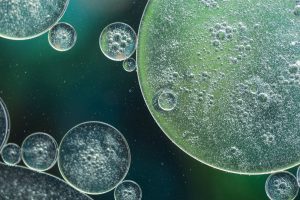-
See the Difference: Save $1,000 on LASIK , Find More
*Must mention this promotion and be treated in May of 2025 to qualify. $1,000 off for both eyes on standard Wavelight price, $500 off for one eye. Cannot be combined with any other offers.
The Environmental Impact of Contact Lenses
Are contact lenses harmful to the environment?
In the US alone, over 45 million people wear contact lenses. What most contact wearers don’t realize and would be shocked to know the environmental impact of contact lenses.
Recent findings as a result of comprehensive researches are showing how dangerous contact lenses are in our waterways. Contact lenses are made of plastic. Even though they are biomedical, they are not effectively biodegradable.
To make matters worse, lots of contact lenses are discarded the wrong way. Around 20 percent of contact wearers are in the habit of flushing their lenses down the toilet or spraying the contacts down the sink, which in turn clogs our waterways.
“When the plastic loses some of its structural strength, it will break down physically. This leads to smaller plastic particles which would ultimately lead to the formation of microplastics,” Varun Kelkar says (Biodesign Institute’s Center for Environmental Health Engineering at Arizona State University (ASU)). “Aquatic organisms can mistake microplastics for food and since plastics are indigestible, this dramatically affects the marine animals’ digestive system. These animals are part of a long food chain. Some eventually find their way to the human food supply, which could lead to unwanted human exposures to plastic contaminants and pollutants that stick to the surfaces of the plastics.”
Contact lenses are small and transparent, which means they are already hard to recognize for the fish. Even with all the filters used in wastewater plants, the microplastics are so small and flexible and they easily make it past those.
Since contact lenses are more dense than water, they tend to sink to the bottom of the waters, where bottom feeders think they are food and ingest them. They also spread bacterial infection and fungal diseases easily, further aggravating the mess.
Since contact lenses are made of softer plastics than those used for everyday items like textiles, they may pose another challenge – the effect of wastewater treatment on them. Upon research, it was discovered that the plastic polymers used in a lot of contact lenses get weakened when exposed to these chemicals for a long time.
Weakened polymers cause a physical breakdown, making the already small contact lenses even smaller. At this rate, it is almost impossible to get rid of. When these are emptied into the waters and ingested by corals, fish, and other small marine animals, some of these get back in our own stomach as food. In essence, we are also at risk.
The risk is just too much to be ignored and a better alternative is required. What we need is a solution that doesn’t leave such harmful footprint left by contact lenses every day. Luckily, we have one in LASIK.
What Is LASIK And Why Should You Consider It?
LASIK is a medical word that stands for laser in-situ keratomileusis, a popular medical procedure involving surgery to help people who have nearsightedness (myopia), farsightedness (hyperopia), or astigmatism to improve their vision.
To do this, the clear front part of the eye, known as the cornea, is reshaped to allow the light travelling through it to properly get to the retina hidden at the back of the eye. The results are incredible. Generally, you can expect to achieve 20/25 vision or even better.
This is an effective alternative to using contact lenses and glasses. As a matter of fact, more than 80% of people who have undergone this procedure have gone on to do great without the need for their contact lenses or glasses for most of their everyday activities.
LASIK is not a fad. This has been used in helping patients to correct their vision for over 25 years, with around 96% success rate, or even higher when enhanced. This procedure is associated with little pain. The drops applied takes care of that. The effect is fast, with most visions improved within the first 24 hours.
Of course, this is not to say there are no disadvantages. For example, the procedure is complex. So, it is safer to work with experienced surgeons and medical professionals. There are also few cases of discomfort, glare, dry eyes and some other conditions in the first 1 or 2 days, but even in such cases, these wear off themselves.
Generally, you will have a follow-up after surgery to evaluate the result. You will do this regularly for the first few months to make sure everything worked out as planned. LASIK is so effective, you rarely have to worry about any serious side effect.
And that is the beauty of it all – an effective solution shouldn’t have to destroy the environment. Why not have better vision and safer world at the same time? With LASIK, this is totally possible.
Sources:
https://www.eurekalert.org/pub_releases/2018-08/acs-tec071718.php
The environmental cost of contact lenses – American Chemical Society. (n.d.). American Chemical Society. https://www.acs.org/content/acs/en/pressroom/newsreleases/2018/august/environmental-cost-of-contact-lenses.html
What are microplastics? (n.d.). https://oceanservice.noaa.gov/facts/microplastics.html
Pande, P. (2018). How your Contact Lens harm the environment. Green Clean Guide. http://greencleanguide.com/how-your-contact-lens-harm-the-environment/
LASIK Eye Surgery. (2022, November 9). WebMD. https://www.webmd.com/eye-health/lasik-laser-eye-surgery#1
LASIK eye surgery – Mayo Clinic. (n.d.). https://www.mayoclinic.org/tests-procedures/lasik-eye-surgery/about/pac-20384774
YOU MIGHT ALSO LIKE...
VISION CENTERS NEAR ME
Enter your zip code, city, or a doctor name below to find a vision center.
Find out if LASIK is right for you
Congratulations!
Your vision issues can most likely be corrected with a LASIK procedure. Schedule a free consultation today.
Answer 5 simple questions to see if you are a candidate
What is your age group?
Do you wear...
With corrective lenses, do you have...
Have you ever been told that you have astigmatism?
Have you ever been told that you have dry eyes?
Request an Information Kit
Learn about your surgeon, the latest advanced technology, procedures, options and benefits, financing options, and what to expect from your LASIKPlus experience.



